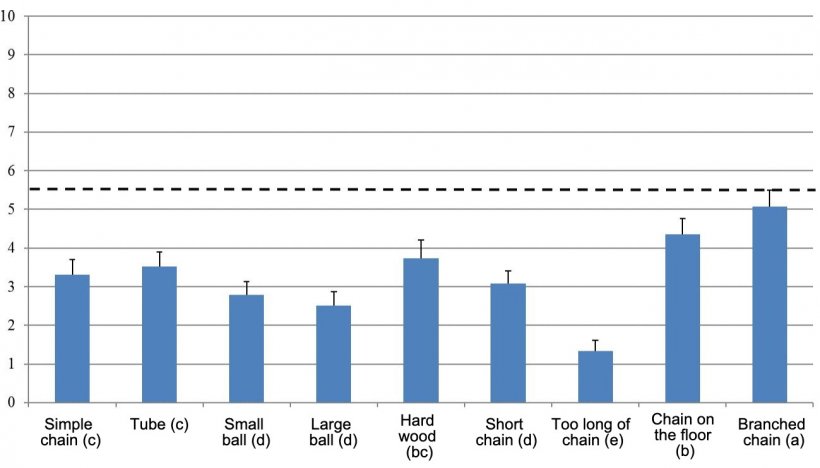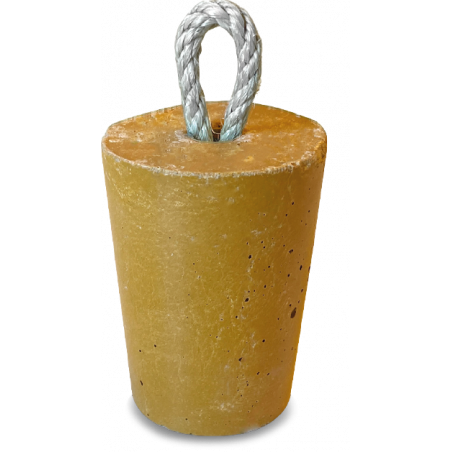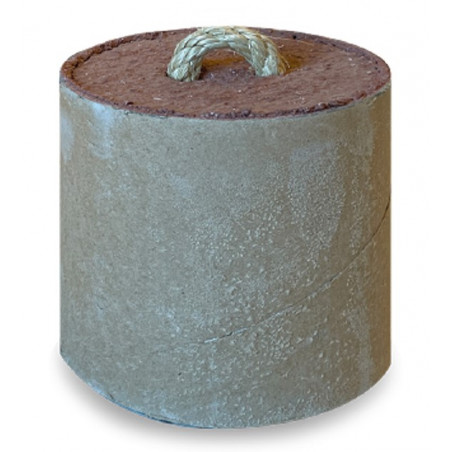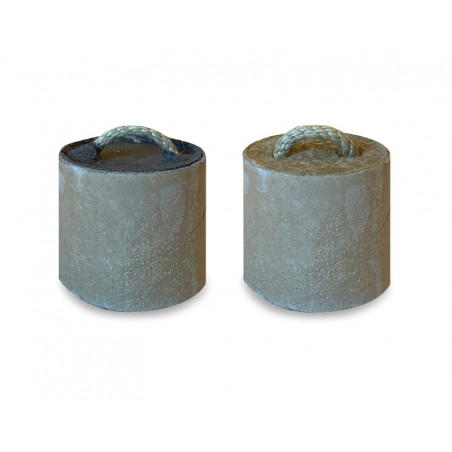Objective
Improve the use of "marginal" enrichment material.
Description
Although steel chains are considered "marginal" enrichment material, the pigs are attracted to them. Pigs are stimulated by the chain's mobility, noise, and anatomical shape for their mouths.


Photo 1: Example of a branched chain.
This tip shows how to enhance the attractiveness of chains. The idea originates from the Netherlands. Let's see what it is all about: to a simple chain we add other chains to branch it out. As in other cases, the secret is that they can play together (pigs are social animals and prefer to be part of a group, eat together, move together, etc.). Adding a rope or a piece of soft wood to the ends of the chain can further enhance the characteristics of this material, making it chewable.
Pigs playing together at different stages of rearing.
Some things to keep in mind:
- Correct length: we can let it touch the ground, favoring the simulation of rooting behavior.
- Correct diameter of the links: it is useless to provide too thick of a chain to a very small piglet. It must fit "comfortably" in the mouth, without requiring too much effort to chew it. A diameter of 4-5 mm is recommended for weaned piglets, 7 mm for growing pigs, and 8 mm for finishing pigs and sows.
- The distance between branches should be about 10-15 cm, so that the manipulation heights are all similar (we usually have animals of uniform weight in each pen) so that the pigs are at the same level when playing.
- The end of each chain should be at the level of the snout of the pigs in the pen, approximately.
- To achieve a greater effect, a ratio between the number of chains and the number of pigs must be maintained.
- It is possible to create branches with mixed materials (balls, wood, etc.), the important thing is that they play with them.
The following table shows a study that compared different enrichment materials. which was the best?

Figure 1. The scores of various enrichment materials are shown between 0 and 10. Distinct letters indicate significant differences. Enrichment materials above 5.5 are considered acceptable. (Bracke and Koene, 2019)







